Heavy metal has an unfortunate way of homogenizing itself over time. For a form that reveled in originality and defiance at its advent, there remains much myopic worship for the genre’s past, and plenty of focus on fusing various styles to achieve new levels of “heaviness.” But less often does a band forge a truly unique voice. Dillinger Escape Plan is one group that hasn’t ridden coattails to the cutting edge, but in large part tended to its very sharpening since emerging as a whirling maelstrom of aggression from New Jersey’s metal and hardcore scene 20 years ago.
Since the release of their debut full-length, 1999’s mind-bending Calculating Infinity, Dillinger Escape Plan has fearlessly created music that challenges with its speed, astonishing aggression, jazz fusion-informed guitar work, and mercurial shifts in meter and dynamics that have become the band’s trademark. The potent, if often terrifying, sound the Dillinger Escape Plan has crafted for itself has influenced and inspired a generation of metal fans to seek a world beyond the walls of 4/4 time and the pentatonic riffs of yore, and is largely responsible for defining the archetype of the “mathcore” sound. Add in a legendary live show spawned from the instinctive, violent, self-immolating performance art of punk’s glory days, and the Dillinger Escape Plan remains one of the most important groups in the contemporary metal underground.
With the release of the band’s sixth album, Dissociation, the Dillinger Escape Plan has given the world its swan song. Adopting the philosophy that it’s better to turn out the light on your own terms—as it shines its brightest—rather than suffer the trauma of burning out, the Dillinger Escape Plan has announced that Dissociation will be its final release.
Rendered in flourishes of musical schizophrenia that jut between the band’s manic heavy metal, melodic rock, and even electronic elements, Dissociation is beholden to absolutely nothing in the way of sonic boundaries, yet is somehow as cohesive a statement as the band has ever released. It’s a triumphant final work that displays what’s possible when a volatile group matures without sacrificing its original intent.
Guiding the Dillinger Escape Plan’s chaos is founder, creative architect, and guitarist, Ben Weinman. A dexterous and adventurous player and songwriter, Weinman has looked after Dillinger’s garden of sonic insanity through lineup changes, record label fallout, and the general turbulence that plagues artists who create unapologetically outside the easily digested norm. We spoke with Weinman about his guitar and composition philosophies, his unexpected musical roots, and the process of giving life to an album that bears the weight of finality.
Had the band already agreed this album would be the last when you hit the studio to track it?
It was discussed during the early stages of songwriting, but finishing the songs and completing the lyrics was done with that knowledge.
Was there something specific you wanted to say with Dissociation—a final statement for this band?
It’s really hard for us to be objective this close to it. It’s always something that comes with the clarity of time, but that’s a hard question to answer. We’ve never done concept records where we go in with an idea about how we’re going to do things or some specific narrative, but I’d say the main difference this time around is that we didn’t let people sway us during the process.
This statement is entirely ours and we wanted to do what we wanted to do this time, and we didn’t allow anyone else’s agenda to impact us. For example, Greg [Puciato, vocals] wasn’t feeling it immediately, so we pushed the album release date back and gave him more time to spend with the music before tracking vocals, which is atypical because we’re usually on a schedule with the label and what not. Greg didn’t finish his vocals until two months after the rest of the album was completely finished.
We didn’t want to have any regrets and we didn’t adhere to anyone else’s guidelines, even to the extent that people would tell us we’re doing things wrong and our battle cry became “there’s more than one way to skin a cat!” I think that phrase came out of my mouth a thousand times throughout the recording process—both in reference to musical and management decisions.
Another example is that we wanted to mix our album with our longtime friend Kurt Ballou of Converge and he was only available during a specific time, and we thought the record would be ready by then, but it wasn’t and the vocals weren’t done, so we just mixed it without vocals. Everyone around the project was like “you can’t do that!” and we just went with it, and the result didn’t suffer for it, in our opinion.
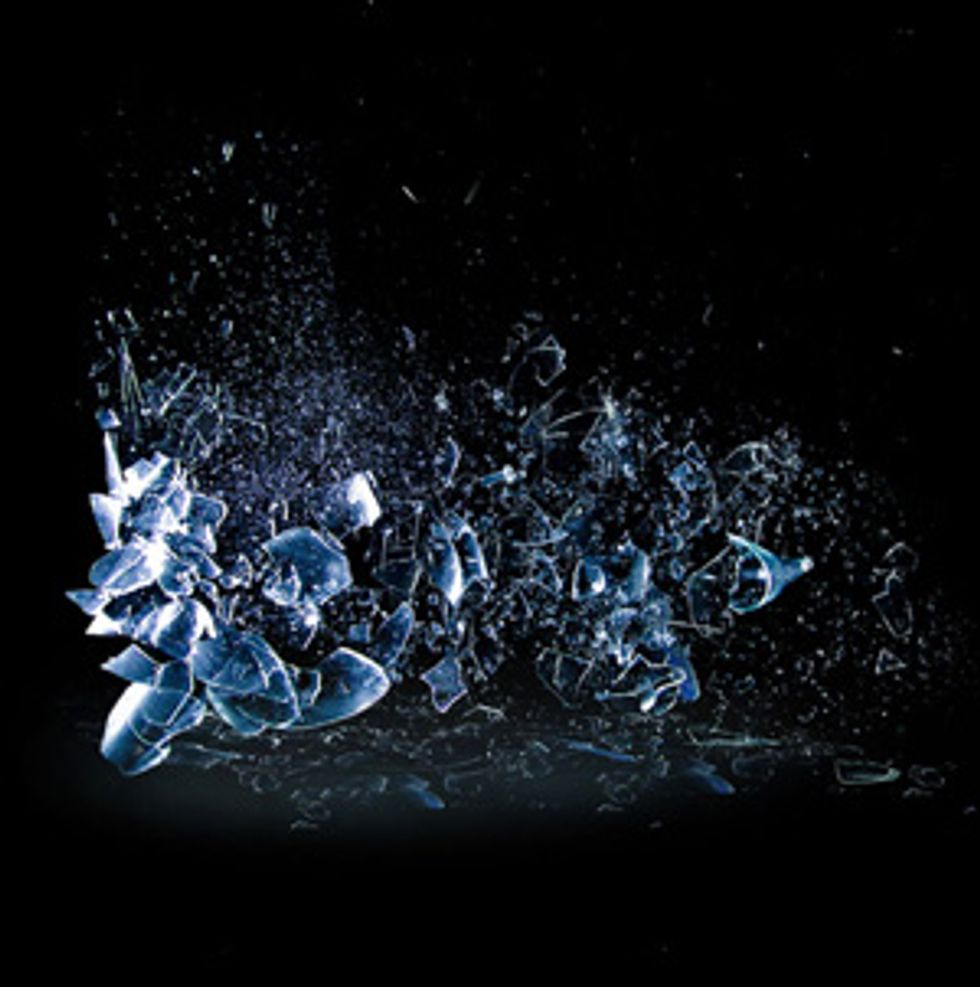
FACTOID: Dillinger Escape Plan wanted Kurt Ballou to mix Dissociation, their sixth and possibly last album. Because the vocals hadn’t been recorded when Ballou was available, he mixed the album without them.
It sounds extremely cohesive and that speaks to how carefully the band put it together.
I will say that, while it’s hard to believe because of how united we all are now and how proud we all are of this album now, the only people that had faith in it during the majority of the process of making this album were Billy [Rymer, drums] and I. Everybody expressed things like “this isn’t Dillinger” or “this isn’t good enough” or “this is too weird for us” and every now and again, Billy and I—who generally complete much of the musical side of things in this band before any other people get ahold of it and do their thing—would have to separate ourselves and get away from the team, and get back into it and confirm that where we were headed was right.
We constantly had to say “trust the process” and ask others to trust us. There was a lot of negativity, and people were living in different states and it was a mess. I constantly had to say to myself and everyone else, “I may not be good at almost anything else in this world, but I know how to fucking make a Dillinger Escape Plan record because for 20 years that’s the only thing I’ve confirmed that I can do—so shut up and trust the process!” And then, as everyone started taking it in and adding their parts to it and gluing it all together, it suddenly became everyone’s best performance. Everybody feels that way now.
There are no regrets. I think it’s particularly Greg’s best performance and the most honest he’s ever been on any album, which is ironic because he wasn’t confident in it at first. I think he’s matured to the point where he’s being truly reactive to the music and not thinking about what’s supposed to be happening during something or what I would want over a part. He reacted to the songs and added something really special because of that. And we had to trust Greg’s process, too! That was another side of it, giving him the space he needed.
DEP’s principal songwriter and guitarist Ben Weinman jumps from his Mesa/Boogie Mark V and takes aim with his trusty ESP LTD H1001-M … while still managing to look cool for the camera. Photo by Ken Settle
You’ve said that blues-rock guys like Clapton and Stevie Ray Vaughan had a heavy influence on you as a young player. I’ve always been curious where that influence comes into your playing now, having forged a distinctive voice so removed from that group of players.
At that time, Clapton and Stevie Ray Vaughan were considered the virtuosos, and SRV played extremely difficult licks, but with a lot of soul. That always stayed in my mind—that you can’t sacrifice soul and feeling for technique and cleverness. I think that’s one of the things that separates us from other more technical bands: We always wrote music we could feel,and over the years we’ve thrown out plenty of stuff that was complex or technically interesting because it didn’t feel like it had any emotion to it, and I think that’s the big thing I took from those blues guys.
King Crimson has also always been a huge deal for myself and Kevin [Antreassian, guitar], too. Hearing that stuff was a total game changer. John McLaughlin was a very big deal for me, too.
What did McLaughlin bring to the table that changed your approach?
He had eclectic influences that had a big impact on me and were inspirational to me. He wasn’t afraid to bring in Middle Eastern and Asian influences, and he always reached deep. He wasn’t technically perfect—his playing was more about emotion, even though he got more technically proficient and precise later in the years when he was working with Miles Davis. But he was always just going for it and more concerned with the music itself than hitting every note and avoiding clams. I like guys like that because I never wanted to sit there with a metronome and play everything perfectly.
Is there anybody in recent years that’s had an impact on how you approach the guitar? Do you feel like you’re still growing as a guitarist at this point?
I think I’m growing as a musician, absolutely. It’s not just about guitar for me anymore—it’s production and songwriting and the big picture. Guitar playing is an outlet, and not to say I don’t care about playing guitar anymore, but I think your peak is typically when you’re a kid and you just want to sit and play all the time. But life gets more important as you get less life to live and that’s just the reality.
I realized by being a touring musician that you need to live in order to write honest music. The guys I came across over the years who just sat in the basement shredding never wrote anything important or challenging in my eyes. They can clock in at a high bpm, but the music that comes from those kinds of players is never going to change the world.
As a dexterous, athletic player, how did you go about developing and maintaining that explosive style?
The big thing was just writing music that called for that kind of playing. I was just a blues-based, punk-hardcore, noisy kind of player. Then I got into electronic music, and King Crimson, and fusion, and Mahavishnu Orchestra, and a lot of challenging stuff at the same time. My background in metal had already kind of run its course by the time this band started and I just wanted to create something within my own underground scene that was as punk as the first bands that turned me on.
I wasn’t there for Black Flag or Bad Brains—I came in at the end of that era—but the stories I heard about those bands were just stories. It wasn’t happening anymore and it wasn’t extreme anymore; it was just new bands mimicking those classic bands. The metal bands at the time that were coming out just sounded like the old bands, too, but there wasn’t anything truly extreme anymore. Metal had hit the radio in an ugly way. Slipknot and Korn were massive when we started and I wanted to create music that would make people turn their heads in the same way as when those first three-chord punk bands were just wrecking shit with a message, but the way we had to do it was to push different kinds of boundaries. So I started writing stuff that felt punk and aggressive, but was absolutely non-conforming to what was happening at the time, even in our small subgenre. It had to be challenging and I had to write things that I couldn’t necessarily play to accomplish that goal.
Ben Weinman’s Gear
GuitarsESP LTD BW-1 Ben Weinman Signature Model
ESP LTD H1001-M
Amps
Mesa/Boogie Mark V
Laney 4x12 (straight front)
Randall Isolation Cab with Celestion Vintage 30
Effects
Way Huge Swollen Pickle Jumbo Fuzz
Dunlop DB-01 Dimebag Cry Baby From Hell Wah
Boss NS-2 Noise Suppressor
T-Rex Tap Tone Delay
TC Electronic PolyTune
Strings and Picks
Ernie Ball Slinky strings (.010–.046)
Dunlop Tortex large triangle .88 mm picks
How did you develop the ability to play the difficult things you do while putting on the intense, volatile shows Dillinger is so well known for?
I think 20 years of playing in this band has been the best practice! When we first started, I didn’t hit any notes—it was just noise. It was a total mess and I didn’t recreate the songs very well—it was all about the pure, unadulterated free expression of it without any responsibility for what would happen after the moment. I would break shit and not care about what was going to happen. That moment was the most important.
Then people started to actually like the band, which was a big surprise and not the intention because we thought it was just going to be a creative outlet to blow off steam on the weekends. As people started to know the music, it was like, “Fuck, I have to actually play these tunes now.” And I started focusing more on pulling things off live.
With the more angular fusion licks and dissonant riffs that are somewhat of a calling card for you, how do you avoid repeating yourself?
I just had to accept that that’s Dillinger and that’s my vocabulary and my thing, and learn not to try to be the best at everything, but know that I’m good at what I do and just be the best at what I do. The variation comes in by allowing disparate influences to emerge within the already existing vocabulary, whether it’s piano stuff or something that’s more traditionally Latin than the stuff most people expect from Latin music—just played at 200 bpm on a China cymbal through our unique sonic filter.
For instance, the song “Fugue” off the new album is electronic-based, and that IDM/intelligent dance music electronic stuff has always been a huge influence on Dillinger since day one. It was just a little less obvious back then. But I think it’s more about being adventurous within the vocabulary, and doing things like having Bowie keyboardist Mike Garson come in and play what was almost classical piano on a track on Option Paralysis. While we’d had many different styles on our stuff at that point, we’d never had anything even remotely classical. But it’s about adding new elements. I’m not sure there’s a science to it beyond that.
Happy accidents and being playful is a huge part of what I do. Creativity is just retaining that childish nature to be able to throw things on the floor and see something in it. We lose it as we get older and I make sure that I maintain that level of playfulness when we make music—like hearing interesting things in our mistakes and then making them intentional. The song “Surrogate” has a part that I recorded wrong. It cut off and sounded like a chicken, so then I started intentionally writing the riff to be more akin to the accident. That’s where it all comes from—being playful and open.
“When we first started, I didn’t hit any notes—it was just noise,” says Dillinger Escape Plan guitarist Ben Weinman. “I’m purely ear-trained as a player.” Photo by Chris Kies
There have always been little runs in Dillinger’s music that hint at you having serious jazz chops. I’ve always been curious: Is that something you’ve cultivated?
I never learned how to do it all the way. I had some basic blues lessons when I was young, but I’m purely ear-trained as a player. Most of the stuff I rely on, I heard in other music and learned how to do it. My natural tendency is to follow modes via ear. Later on, I started to learn that I do a lot of major scales and whole-tone scales, and chromatics a lot, and I knew that I liked that stuff from the fusion guitar I love, but I never studied it or knew what I was doing. But a lot of my answers to these kinds of questions come from articles in which someone else analyzed my riffs and explained them, and it’s like “Oh, so that’s what it’s called!”
Based on how cavalier the band is about throwing meter around, it would be easy to assume that Dillinger writes with time signatures in mind. Is that the case?
It’s all feel. There’s stuff on this album that you can’t fit into a time signature. There are certain people within the production world that want to lock you to a grid and there’s a lot of material on this album that cannot be locked that way.
I think it has something to do with my ADD as a kid. Rhythms and craziness are like meditation for me because repetition allows my mind to wander. The crazier something gets, the better it is for my mind. In transcendental meditation, you’re supposed to say your mantra at random so that you can’t start daydreaming or drifting too far while you’re doing it—it keeps you focused to do it at random. All of the chaotic things that go into Dillinger’s music keep me focused. I’m not worried about my day, I’m not worried about anything, I’m just in that moment.
So the band doesn’t track to a click?
Sometimes Billy does, but he’s really good at playing around it. If you put a click against these songs, it wouldn’t be on grid at all. The click would start and end in the right spots, but it would ebb and flow a lot in between. I think that’s the difference between a world-class drummer that has a great pocket and swing, and someone that’s just athletic.
The ultra-dissonant, penetrating dyads you often use rhythmically have become part of your signature as a guitarist, and something that has found its way into the vocabulary of countless extreme metal bands over the years. How did you discover those?
I heard some of the weirder old punk bands pull those chords. When I was coming up there were metal-influenced punk guys in the Jersey scene that were a little more proficient at their instruments. Bands like Deadguy and some of the bands on the Amphetamine Reptile label at the time that would be considered the early version of math-rock used that shape a lot, and that’s where it entered my vocabulary.
I’ve noticed that onstage you still seem to favor your old ESP LTD H1001-M over your signature model. Any particular reason for that?
Honestly, it’s just because it’s a little lighter and my back and neck have taken such a beating over the years and I’ve taken so many hits. The other thing is, the older one is already in rough enough shape that I can beat the fuck out of it. I don’t want to worry all the time about the signature models because I care about them so much. I’ve broken a few of them over the years and it bums me out when I do, so I don’t use the signature model for the entire set.
YouTube It
DEP perform Dissociation’s opening track and first single, “Limerent Death,” last summer at the Hi Hat in L.A.
The signature model has the scale length and neck style of the more metal LTD because I wanted the scale of a metal guitar to do the upper register stuff, but I wanted the diversity of sounds you can get out of a semi-hollow. Also, a semi-hollow body removes a lot of the weight and that compensates a little for the EverTune bridge I use, which is a very heavy, big piece of steel. I’ve found that this combination of scale length, semi-hollow construction, and bridge mass makes a sound I really love.
Your stage rig seems pretty consistent. Did you experiment with gear in the studio for this record?
We did a lot of experimentation and we used a mountain of amp heads in the studio we worked out of. There would be pedals scattered everywhere. For the core tracks, we used an ’80s Mesa/Boogie half-back 2x12 cab that was actually wired like a 1x12, and on the bottom we used a closed-back speaker I found at a pawnshop. We used a ton of heads and cabs linked up with a Bradshaw switching system, so we could swap things easily on the fly and have all the options we wanted.
There were times when I’d use four or five different heads on a single song, so I could never really recreate live what’s going on on the album. We used a lot of Dave Friedman’s amps, a Splawn Quick Rod, a Soldano, an old-school Peavey 5150, a Bogner Ecstasy, and of course, the Mesa Mark V that I use. My signature sound for the history of this band has traditionally been a Mesa TriAxis in the left channel, which I replaced with the Mesa Mark V for the past two albums, and a 5150 for the right channel. The 5150 has so much attack, and that percussive attack that’s a huge part of my sound comes from that.
One thing that strikes me about Dissociation is how seamless the transitions are between passages. Is there an overarching philosophy you take to structure?
Nope. However, I will say feeling is the most important thing with transitions, and it’s the most important thing to a song that those transitions feel good. Sometimes it’s jarring intentionally, but every single thing that happens in a Dillinger song has a purpose.






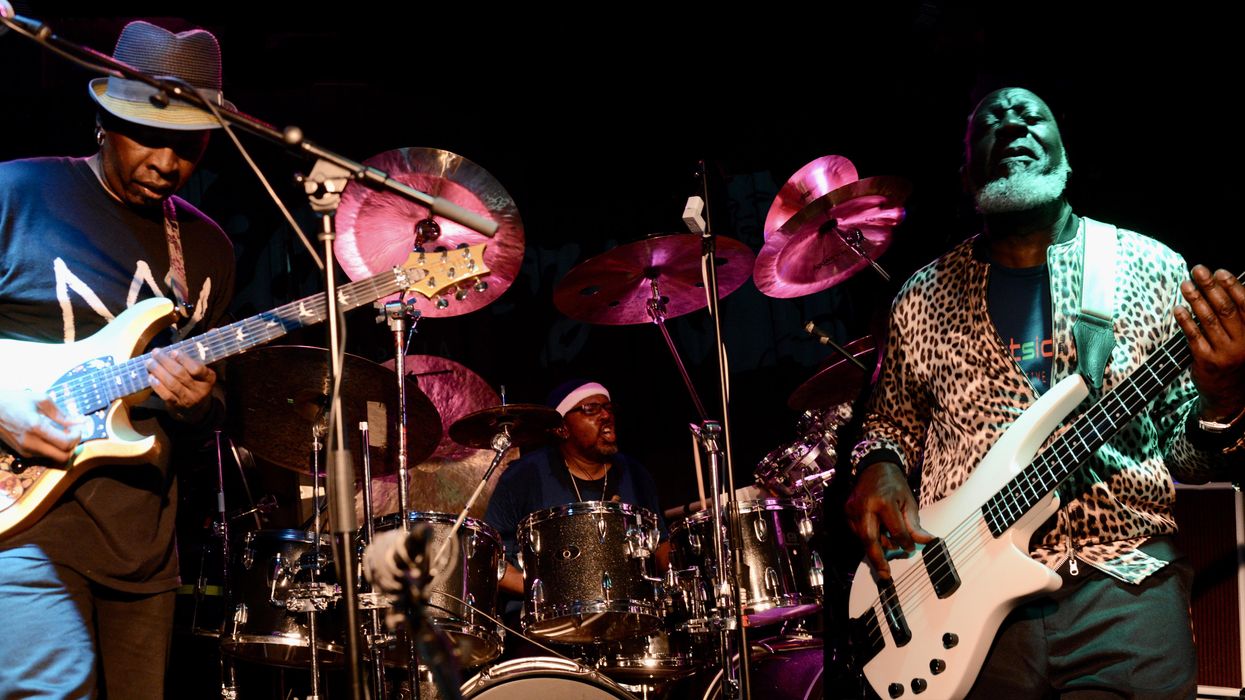



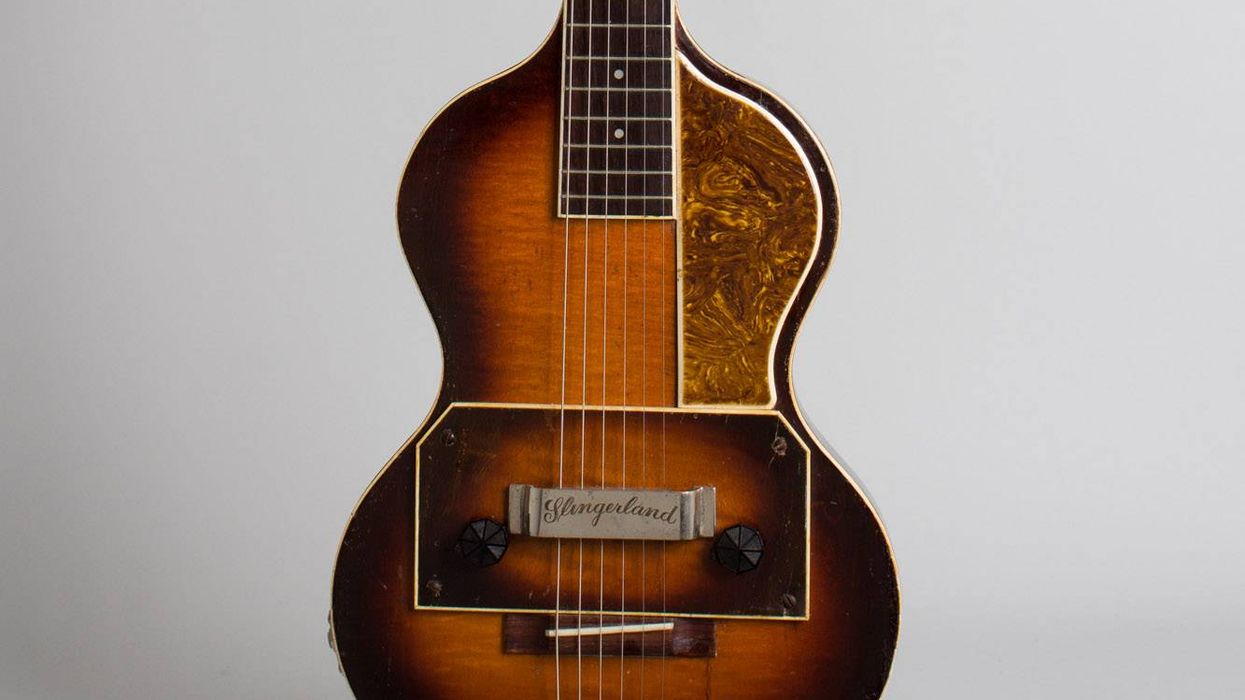
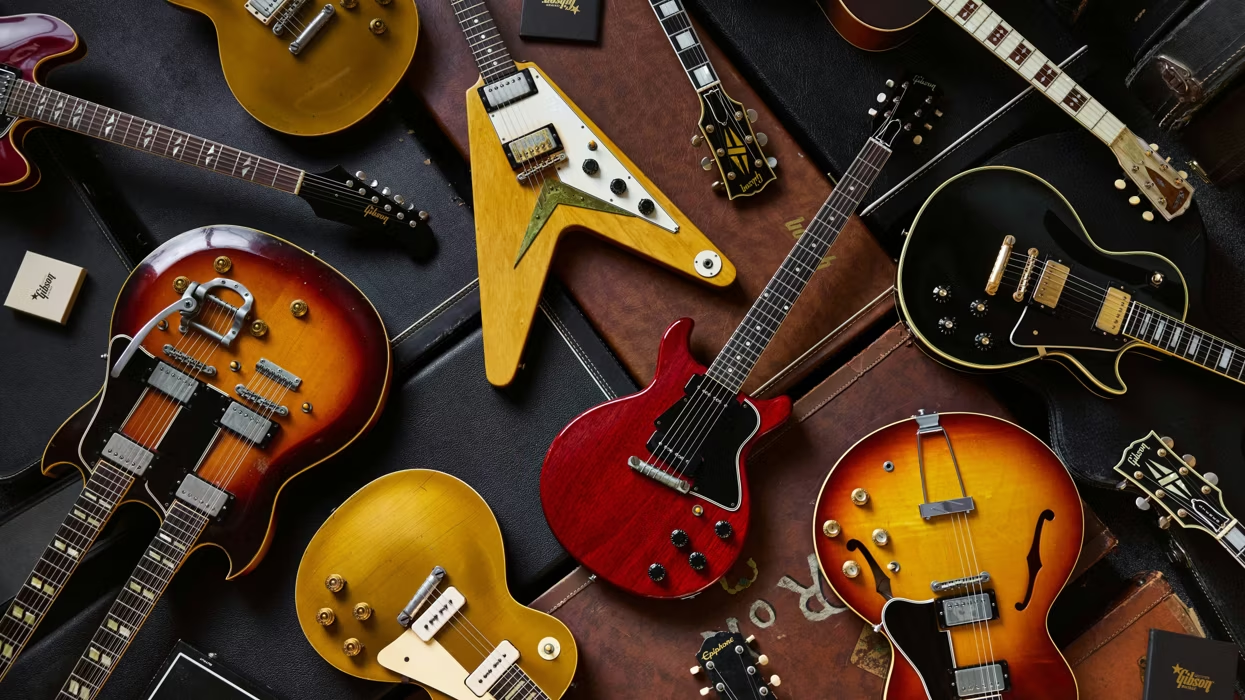
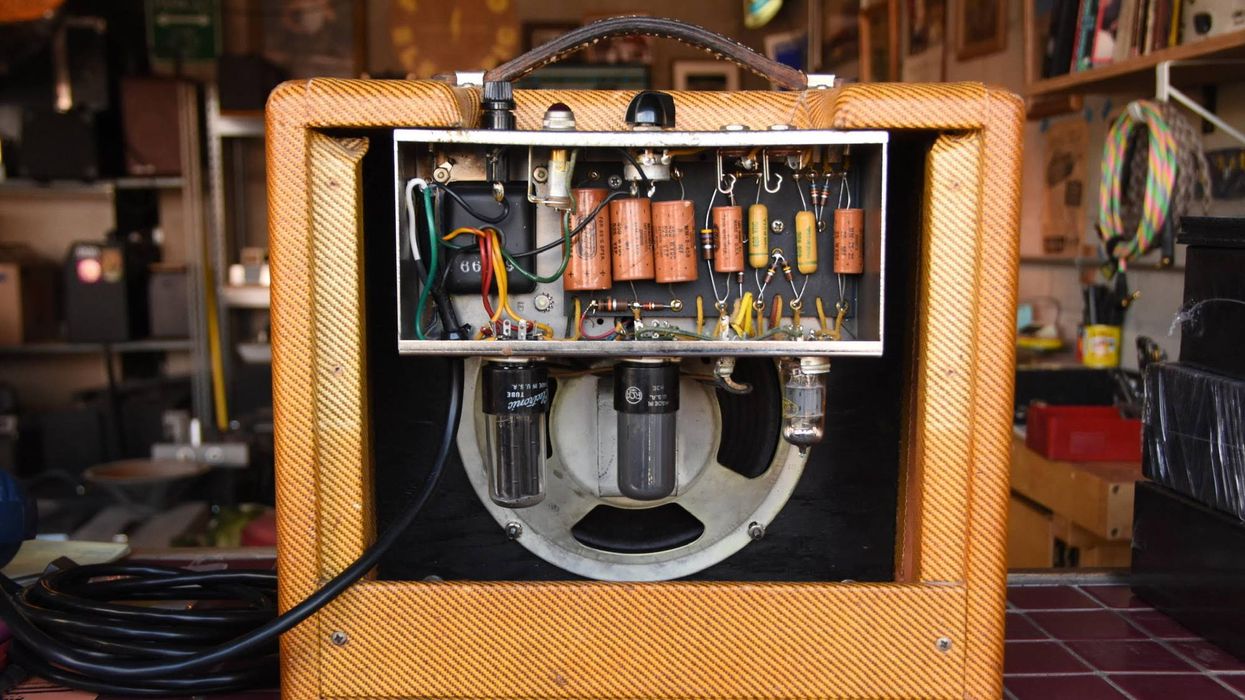
![Rig Rundown: Russian Circles’ Mike Sullivan [2025]](https://www.premierguitar.com/media-library/youtube.jpg?id=62303631&width=1245&height=700&quality=70&coordinates=0%2C0%2C0%2C0)












![Rig Rundown: AFI [2025]](https://www.premierguitar.com/media-library/youtube.jpg?id=62064741&width=1245&height=700&quality=70&coordinates=0%2C0%2C0%2C0)




















 Zach loves his Sovtek Mig 60 head, which he plays through a cab he built himself at a pipe-organ shop in Denver. Every glue joint is lined with thin leather for maximum air tightness, and it’s stocked with Celestion G12M Greenback speakers.
Zach loves his Sovtek Mig 60 head, which he plays through a cab he built himself at a pipe-organ shop in Denver. Every glue joint is lined with thin leather for maximum air tightness, and it’s stocked with Celestion G12M Greenback speakers.











